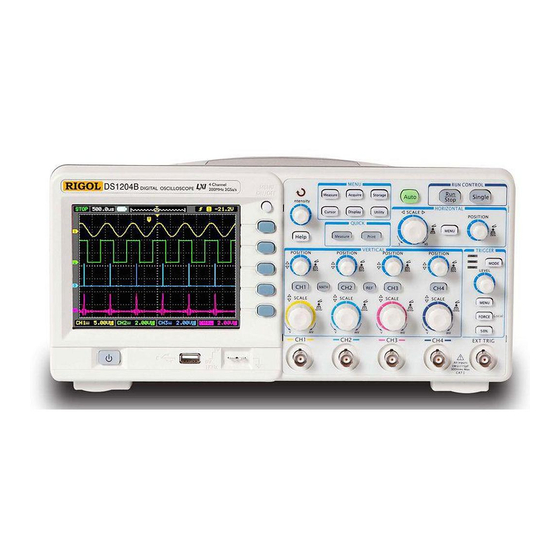
Rigol DS1204B Programming Manual
Digital oscilloscope, ds1000b series
Hide thumbs
Also See for DS1204B:
- Programming manual (152 pages) ,
- User manual (172 pages) ,
- Service manual (75 pages)
















Need help?
Do you have a question about the DS1204B and is the answer not in the manual?
Questions and answers